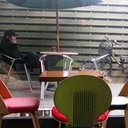Control of de novo purine biosynthesis genes in ureide-producing legumes: induction of glutamine phosphoribosylpyrophosphate amidotransferase gene and characterization of its cDNA from soybean and Vigna.
Mots clés
Abstrait
Soybean (Glycine max) and mothbean (Vigna aconitifolia) cDNA clones encoding glutamine phosphoribosylpyrophosphate amidotransferase (PRAT), the first enzyme of the de novo purine biosynthesis pathway, have been isolated from nodule cDNA libraries. The amino acid sequence deduced from soybean clone showed > 85% homology to the PRAT sequence of mothbean and 33-47% homology to those of bacteria, yeast, chicken, rat and human. The soybean clone encodes a protein with an N-terminal sequence resembling a plastid-targeting peptide. Downstream from this peptide is a sequence similar to the 11 amino acid propeptide found in the Bacillus subtilis, chicken, rat and human PRAT proteins. The mothbean cDNA, although lacking most of the plastid presequence, encodes the putative propeptide and efficiently complements purine auxotrophy in an Escherichia coli purF mutant. Both the soybean and mothbean clones encode characteristic cysteine residues that are known to be involved in the assembly of a [Fe-S] cluster near the C-terminus of this protein. Levels of PRAT mRNA in mothbean nodules were found to increase steadily as the nodules matured from 13 days to 23 days. PRAT mRNA was not detectable in uninfected root tissue but a low level of transcript was detected in leaves. Treatment of uninfected root with L-glutamine induced the PRAT mRNA transcript suggesting that glutamine produced as a result of assimilation of fixed nitrogen is funnelled into the de novo purine biosynthesis and controls the expression of this pathway in root nodules.


